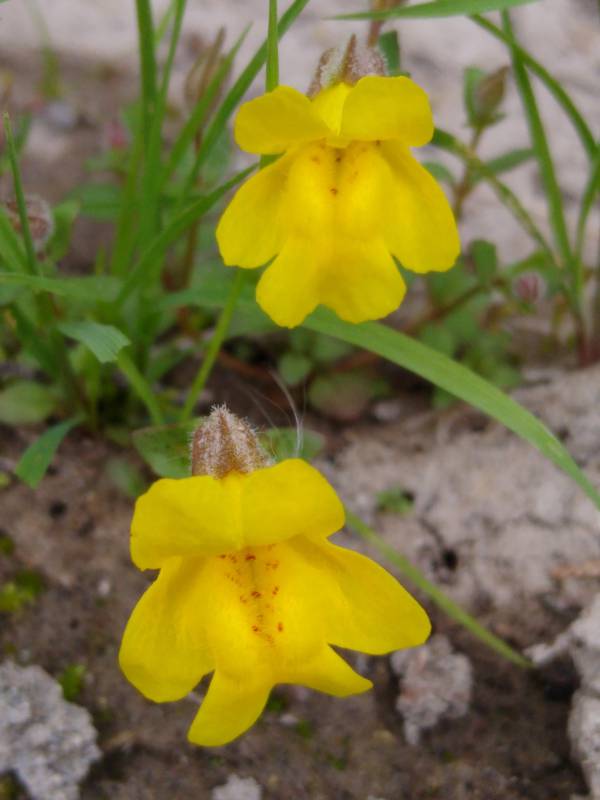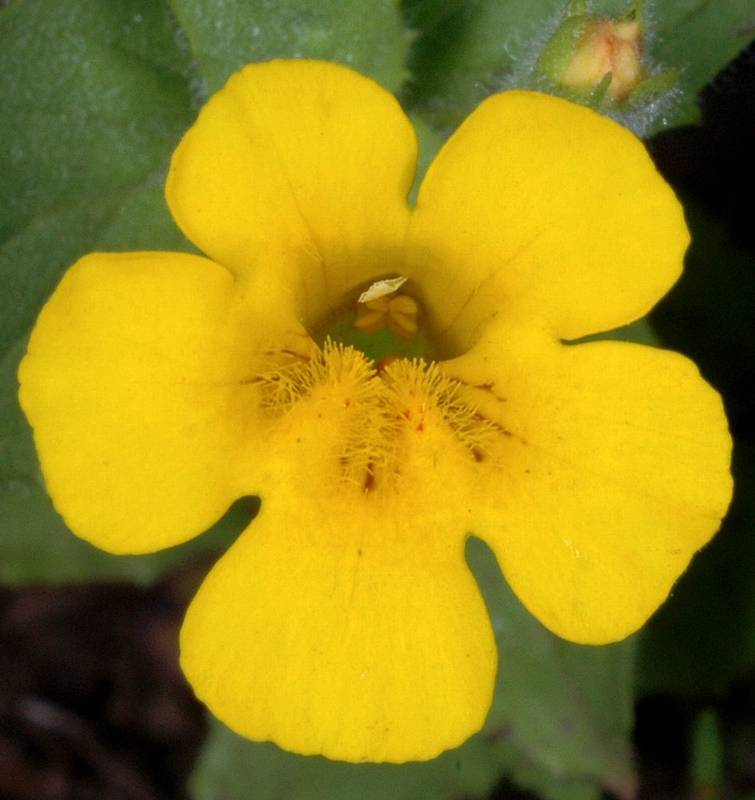Erythranthe caespitosa
Erythranthe moschata
large mountain monkey-flower
musk-flower, musk-plant
Leaves both basal and cauline; petiolate, proximal petioles 2-5 mm, becoming sessile distally;
blade commonly purplish beneath, orbicular to ovate to narrowly elliptic, leaves nearest base somewhat lyrate, 3-12 mm and becoming larger farther from base, palmate venation with 3 veins, base wedge-shaped, margins entire to barely finely toothed, apex obtuse, somewhat puberulent above and beneath, hairs minute and stipitate-glandular.
Leaves opposite, remotely toothed, pinnately veined, sessile or short-petiolate, the blade ovate to elliptic-ovate, 1-8 cm. long and 7-35 mm. wide.
Axillary flowers 1-3, from nodes farthest from base, usually solitary; fruiting pedicels generally 10-30 mm, somewhat villous with short gland-tipped hairs, occasionally hirtellous;
calyx broadly bell-shaped, inflated, compressed along sagittal plane, 7-15 mm, glabrous or hirtellous or stipitate-glandular, throat closing, lobe pair nearest base curving upwards, other lobes 3-5 mm, prominently protruding;
corollas yellow with dark red spots, symmetric bilaterally, bilabiate;
tube-throat widely funnel-shaped to nearly cylindric, 15-18 mm, protruding beyond calyx margin; lower limb deflexed and spreading, upper limb curving upward, palate partially closed;
styles slightly hirtellous;
anthers not protruding, glabrous.
Flowers solitary in the leaf axils on long pedicels;
calyx 7-13 mm. long, viscid-villous, especially on the 5 rib angles, the 5 teeth pointed, 2-4 mm. long, the upper tooth a little larger than the others;
corolla 1.5-3 cm. long, yellow, often with some dark lines or dots, only slightly bilabiate, the tube nearly cylindrical;
stamens 4.
Capsules 4-5 mm, included.
Capsule.
Erythranthe caespitosa
Erythranthe moschata
- Local floras:
BC,
OR,
WA
- Local Web sites:
Flora NW,
PNW Herbaria
WildflowerSearch
iNaturalist (observations)
- LBJ Wildflower Center
- SEINet
- Plants of the World Online
- Encyclopedia of Life
- Wikipedia
- Google Image Search
- Local floras:
BC,
CA,
OR,
WA
- Local Web sites:
CalFlora,
CalPhotos,
Flora NW,
PNW Herbaria
WildflowerSearch
iNaturalist (observations)
- LBJ Wildflower Center
- SEINet
- Plants of the World Online
- Encyclopedia of Life
- Wikipedia
- Google Image Search



